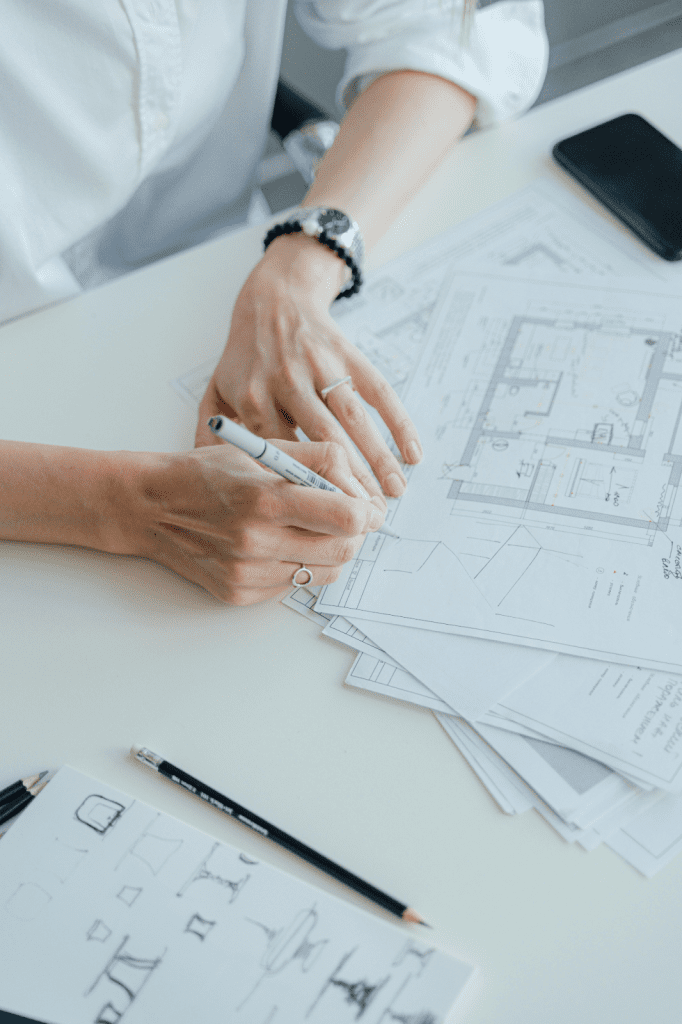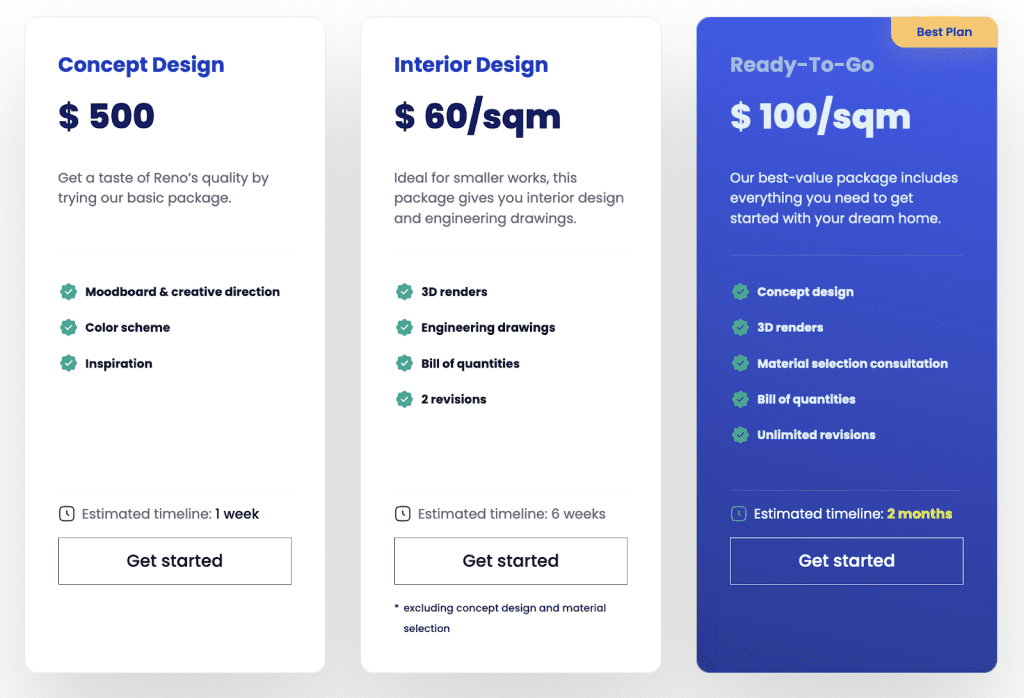Interior design is an intimate process and needs the expertise of professionals.
Whether you are looking at upgrading a room or starting from scratch, the task of interior designing can prove to be quite overwhelming. You may have an idea but are clueless about how to bring it all together, within a budget or you may have zero clue about what you want.
Either way, an interior designer can assist you with not just a vision but how to go about putting it into shape, planning a layout, and buying furnishings, furniture, and accessories.
Here’s how one can find a skilled and reliable interior designer who can oversee work from start to finish.
Here are some tips our team of experts share on finding the right interior designer for your project:
The decision of who you would hire to execute your vision of an office/ residential/ commercial or any other kind of space hinges on the scope of your project.
Whether it’s building from the rubble, major renovations, minor tweaks, or building plainly on the aesthetics and visual appeal – these are just some factors to be considered before you decide to hire a designer. The scope of your project is what the choice of a designer will rest on.

There are small-time designers, equally competent but who are willing to take challenges and add to their portfolio by taking on smaller projects of renovation and design.
The bigger, more established companies of interior designers prefer to take on larger projects that showcase their expertise and make a statement in the market. There are mid-level designers too who would take on projects based on the challenge they offer, the scope of work, timelines, and budgets.
Also, remember to check the portfolios of the designers to see the kind of projects they are comfortable with. Most designers share pictures of their projects online.
You are better placed in taking your call if you know what they specialize in – family homes with children, elders, and pets, condos for young professionals or just places for retail/ office uses.
It is important to take into account how far you are ready to stretch your budget or not.
Designers will charge you as per the project. For simpler things like swapping furnishings, they may bill you on an hourly rate, per room, or square foot of the floor plan.
Some choose to ask for a flat fee.
If you choose to let them do all the legwork and source, for example, the same furnishings, be prepared to pay them upfront or a deposit as well as a markup fee for their time.
If it’s a large project like the kitchen or the whole home renovation, the designer’s fee will be a percentage of the total project cost.
Remember, most designers take a consultation fee too. Some may not take up your project but they will leave you with some deliverables after you have shared your vision with them.
How to find yourself the best designer – word of mouth is a good place to start from.
Ask your friends, real estate agents, and employees at hardware, paint, and tile stores for leads.
Instagram may help if you type interior designer by throwing up a few suggestions for you too.
Online directories too will have several entries under that category and then, it’s about reaching out and starting a conversation.
All good designers have their portfolios uploaded on online platforms. It is a matter of some sitting down and browsing their design styles to find the best suited for you. So take your time when shortlisting the options available to you!
Always vet candidates before reaching out.
Start with looking for a degree in interior design. Look for other credentials such as affiliations with professional societies. Their website may also mention the awards they may have won and publications they’ve been featured in.
Fine read for licensing exams and a certain number of years of work experience. Most professionals offer a free chat over the phone before going in for an official consultation. This is a good time to further vet the designer, and ask about the price range of similar projects as yours.
It is also advisable to ask for client references. Study their body of work closely to know if their style is in sync with your project.
A good designer will help you understand the workflow. This includes the meeting schedules, the process that will be followed for approval of designs and products, and the expected timeline.
Professionals usually have a shared document for approvals and design decisions for ease of referencing, when need be. There needs to be mutual likeability and trust since most design projects are long-drawn affairs.
Speak about the scope of your work. The more experienced designers are usually hesitant to take up smaller projects. It is best to be upfront about what is your demand and see whether or not they feel in a position to take on the assignment.
There is no such thing as feeling bad about double-checking the credentials of a designer. Ask them for client references, touch base with them, and have a one-on-one to learn more about the designer’s attitude, work style and other details.
It is the best way to form an opinion.
The websites of most designers have reviews and testimonials shared with the public about their work. It is worth your time and dime to browse through what people have written. Pay attention to the kind of projects they have undertaken and also, the kind of clientele they usually address.
Having decided on who you’d like to work with, brings us to the negotiating table. It is time to discuss everything – if they’ll charge an hourly fee (smaller projects), a flat rate as per the square foot area, or ask for a percentage out of the entire project allocation (bigger projects).
You will have to be made clear about any additional expenses you may incur. Transparency in sharing details of expenses, purchases, and timelines will have to be agreed upon.
Some designers like to give weekly/ fortnightly updates. Others would rather share a bigger chunk of work that is nearing completion.
Ask how many sets of drawings you are entitled to and if project management services are included. If you don’t want to be surprised by sudden expenses, look for an “all-in fee that includes design fee, sales tax, and delivery. Read the fine print.
Most designers have a fixed number of revisions they’ll entitle you to, within the agreed fee. Some would like you to buy furniture from them and in such cases, read the return/ replace policy carefully. Also, every designer has different markup percentages and billing schedules.
A service like Reno is quite handy in these situations as the costs are quite transparent from day 1. You won’t have to worry about any hidden fees or markups. And at the end of your project you will have everything you need to start your renovation.

Ultimately, you have to trust your instincts. Make sure you choose a designer whom you feel comfortable with and around.
You need to be on the same page when it comes to sharing your vision board for the project. Effective communication is fundamental to bringing a project to its fruition.
Timely updates and keeping each other in the loop will help with communication. Any doubts that you may have should be asked without hesitating. Decide on how you wish to communicate too – via email or by phone.
Designers have started to use online client portals with a messaging center. This works very well as it keeps all communication in one place. It saves the time required to dig out an old email or other correspondence.
Even text messages are routed to the same portal and answered from there. Web portals are the chat rooms for the clients and the designers. Ask for such details when signing on the dotted line.
In case you need a ready reckoner for the questions you must ask before finalizing a designer, here are a few important ones:
- How did you get into interior design? What are your credentials?
- What is your design philosophy?
- What is your design style?
- What is your source of inspiration?
- Can I see examples of your past work?
- Would you be able to share some before and after images of your recent projects?
- What services do you offer?
- How do you handle project timelines and budgets?
- What is your communication process?
- Do you have experience with similar projects?
- Can you provide references from past clients?
- How do you handle unforeseen challenges during a project?
- What is your fee structure?
- What do you prioritize, when working on a budget?
- How will I get updates on my project?
- Are you licensed and insured?
- How do you incorporate client preferences into your designs?
In a nutshell, irrespective of whom you choose to work with, remember it’s a two-way street.
You have to be clear about what you want and how you want it. Factor in everything including changes because a better suggestion is made or an edit that’s required because it doesn’t match up with your budget.
Speak about things that work and also, things that do not. It’s your design and how you translate it for the designer will enable him to turn it into how you want it.
Make wise decisions while hiring an interior designer. Be transparent, ask for the same transparency, and see your dreams take shape.
Not sure who to work with? Get in touch with our team of interior design experts to see why we’re listed as the best in the industry.




